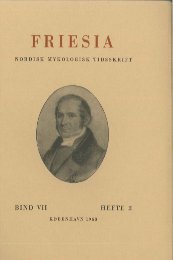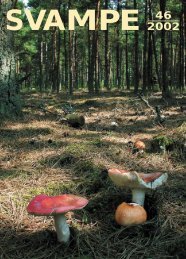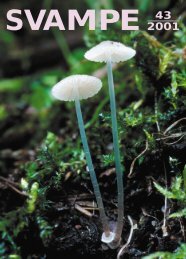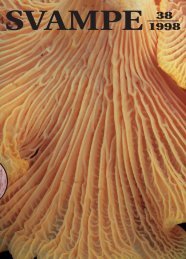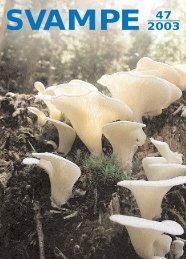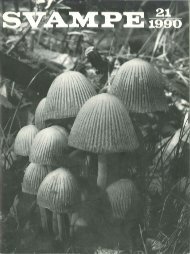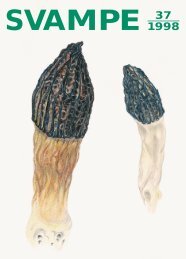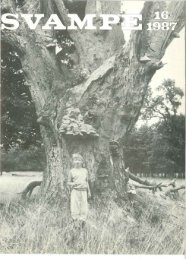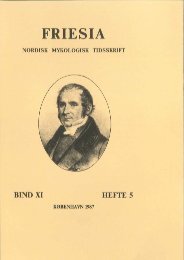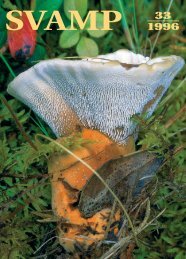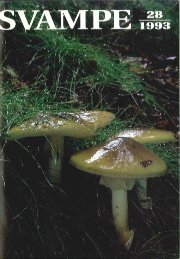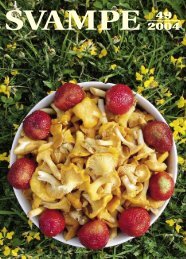Create successful ePaper yourself
Turn your PDF publications into a flip-book with our unique Google optimized e-Paper software.
- 62-<br />
mon, umbo darker brown to almost sepia, edge pale, incurved, scales<br />
clay color to dark tawny olive or paIe sepia. Gills rather crowded,<br />
narrow (up to 4mm broad), almost free, paIe yellowish when young,<br />
soon bright buelethorn brown to tawny olive. Stipe 3-6 X 0,2<br />
0,6 cm, terete, solid, faintly hollow when old, in some specimens subbulbose,<br />
at first pallid nearly to the base which is olive bistre, soon<br />
flushed nearly to apex with this dark color, and even turning darker<br />
when old, densely pruinose, obscurely striate. Flesh in cap and stem<br />
firm, whitish with spermatic smell. Spores (8,0)8,5-10,0(11,5) X<br />
5,0-5,6(6,1),u, elliptic, oblique in side view, thickwalled. Basidia<br />
4-spored. Cheilo- and pleurocystidia 45-60 X 12-18 u , mostly<br />
crested, walls 2-3,u tbick, often brownish ; caulocystidia similar<br />
or more slender, 12 X 70 u .<br />
Gregarious, several flocks on a small area. Oct. 8. a nd 18. , 1948 .<br />
(2543, 2585).<br />
The material has been compared with American exsiccata of<br />
I . atripes (1166, 1306 and 1445, Cheboygan Co., Michigan, leg.<br />
M. Lang e). As given in the original description (vide Kauff<br />
man (1924» the spores of I. atripes are somewhat shorter, 7<br />
9,5 X 5-5,5,u. In 1306 we find them still shorter, 7-8 X 5--6,u,<br />
while in 1166 they are in accordance with the present find. The<br />
cystidia of the American collections correspond to the data given<br />
above, while H e i m (1931) for the only European find up till then<br />
(from Languedoc) finds them similar in size, but very few crested<br />
ones. Even if the microscopical characters seem somewhat variable,<br />
the species is very well characterised macroscopically by the dark,<br />
pruinose stem and the white, firm flesh.<br />
No other Danish records are known.<br />
3. Inocybe Langei f. bispora J. E. Lange The microscopicaI<br />
characters were found in good accordance with the original description,<br />
the majority of the spores measuring 10-12,5 .X 5,8<br />
6,6 u ; some few smaller spores between, 8-9,u long, are possibly<br />
born on 4-spored basidia. Cheilo- and pleurocystidia 45-55 X 13<br />
16 u , thickwalled, mostly crested; caulocystidia similar or more<br />
slender, more pointed, several of them smooth.<br />
Like the plant depicted by J. E . Lange (L c.) most specimens<br />
in the present find were more slender than the typical form. Oct. 18.,<br />
1948 (2587).



